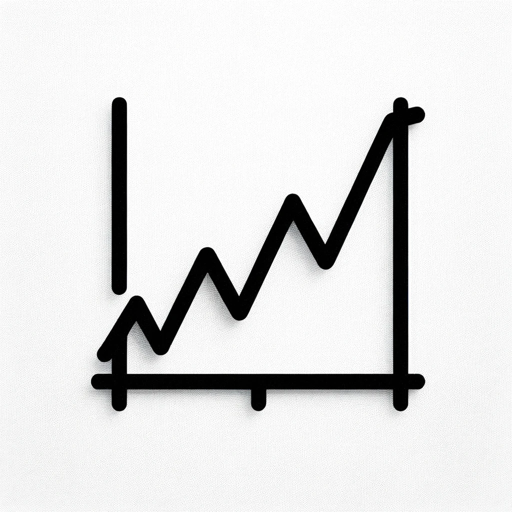Economics Graphs-economic graph generator
AI-powered economic graph creation
Show me cost curves for perfect competition.
Related Tools
Load More
Economics Econ
🔷#𝟏 𝐒𝐩𝐞𝐜𝐢𝐚𝐥𝐢𝐳𝐞𝐝 𝐄𝐜𝐨𝐧𝐨𝐦𝐢𝐜𝐬 𝐓𝐮𝐭𝐨𝐫🔷

Economics + Math 📊
Error checking and explanation in Econ and Math. Designed to support learning by simplifying and clarifying complex subjects in these disciplines. It serves as an excellent support for students & professionals in the field. Last updated May 30, Feedback

Macroeconomics
Expert in macroeconomics, adept at mathematical exercises and Dynare.

economy
- a specialized version focused on economic theories, principles and analysis. Designed to help users understand complex economic concepts, engage in economic policy discussions, and provide insight into a variety of economic issues.

EconomicsGPT
Your world-class Economics tutor, powered by students and instructional material from the University of Chicago's highly-ranked Economics program.

EconGuru
I might explain econ questions better than your professor!
20.0 / 5 (200 votes)
Introduction to Economics Graphs
Economics Graphs is a specialized tool designed to create high-quality, presentation-ready graphics commonly used in economics. These graphs include Supply and Demand diagrams, Cost Curves, Monopoly Diagrams, and Perfect Competition models. The purpose is to provide clear, precise visual representations of economic concepts, aiding in both teaching and understanding complex theories. For example, in a classroom setting, an instructor can use Economics Graphs to illustrate how market equilibrium is reached through the intersection of supply and demand curves. Another scenario might involve demonstrating the cost structures of a firm by plotting Marginal Cost, Average Cost, and Average Variable Cost curves to show their relationships and intersections.

Main Functions of Economics Graphs
Supply and Demand Diagrams
Example
Plotting the supply curve (S) and demand curve (D) to find the market equilibrium.
Scenario
An economist can use this function to demonstrate the impact of a price ceiling on market equilibrium, showing the resulting shortage.
Cost Curves
Example
Creating curves for Marginal Cost (MC), Average Cost (AC), and Average Variable Cost (AVC).
Scenario
A business analyst might use cost curves to analyze the cost structure of a company, identifying the output level at which average cost is minimized.
Monopoly Diagram
Example
Illustrating the monopoly's profit-maximizing output where Marginal Revenue (MR) equals Marginal Cost (MC).
Scenario
In a policy discussion, an economist could use a monopoly diagram to explain the inefficiencies and welfare losses associated with monopoly power compared to perfect competition.
Ideal Users of Economics Graphs
Educators and Students
Economics professors and students benefit from Economics Graphs by having access to accurate and clear visual aids for teaching and understanding economic concepts. These graphs help in explaining theories and models in a more comprehensible manner.
Researchers and Analysts
Economic researchers and analysts use Economics Graphs to present their data and findings in a professional and visually appealing way. These graphs are essential for reports, publications, and presentations, ensuring that complex data is communicated effectively.

How to Use Economics Graphs
Visit aichatonline.org for a free trial without login, no need for ChatGPT Plus.
Begin your experience by visiting the provided website to access the tool without any registration or subscription requirements.
Identify the type of economic graph you need.
Determine whether you need supply and demand diagrams, cost curves, monopoly diagrams, or perfect competition graphs to proceed accordingly.
Enter relevant economic parameters and functional forms.
Input the necessary parameters such as cost functions, demand functions, and other relevant data to generate accurate and tailored graphs.
Customize your graph's style and labels.
Adjust visual elements like intersections, labels, and starting points to enhance clarity and presentation quality of your graphs.
Download or integrate your graph.
Once satisfied with the graph, download it for use in presentations, academic papers, or integrate it into other projects as needed.
Try other advanced and practical GPTs
Graph Master
AI-Powered Business Graphs Made Easy

Pharma RD/BLs
AI-Powered Health Market Insights

Lyrics translation
AI-Powered Song Lyrics Translator

Language Translation (EN-JP)
AI-powered translations, effortlessly accurate

Human Resource Specialist
Streamline HR with AI-Powered Insights

Owl Pal
Enhance your English writing with AI.

E-Sensei
Refine your English with AI-powered precision.

Fastest Response
AI-powered responses, faster than ever.

LOGO
AI-Powered Custom Logo Maker

Story Writer
Craft interactive stories with AI

Lab Report
AI-powered Precision for Lab Reports

Reworder
AI-powered text rephrasing for clarity and engagement

- Research
- Business
- Presentations
- Teaching
- Policy
Frequently Asked Questions about Economics Graphs
What types of economic graphs can I create?
You can create supply and demand diagrams, cost curves, monopoly diagrams, and perfect competition graphs, each with specific functional forms and visual styles.
How do I input data for my graphs?
Enter the relevant economic parameters and functional forms such as cost functions, demand functions, and more to generate your graphs.
Can I customize the appearance of my graphs?
Yes, you can customize various elements such as intersections, labels, and starting points to ensure your graphs meet your presentation and clarity requirements.
Is the tool free to use?
Yes, you can access and use the tool for free by visiting aichatonline.org, with no need for login or subscription.
What are common use cases for these graphs?
These graphs are commonly used in academic writing, classroom presentations, economic analysis, business reports, and policy planning.